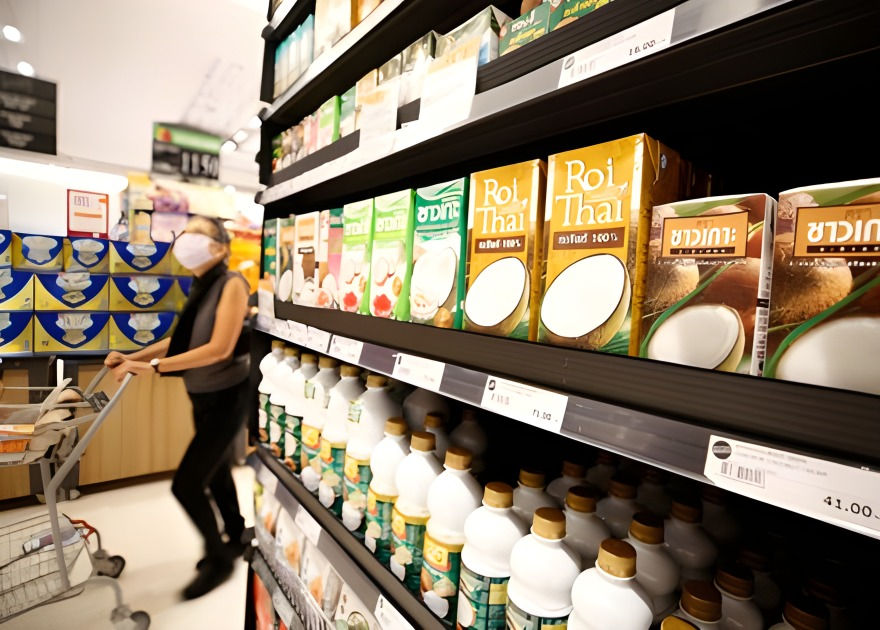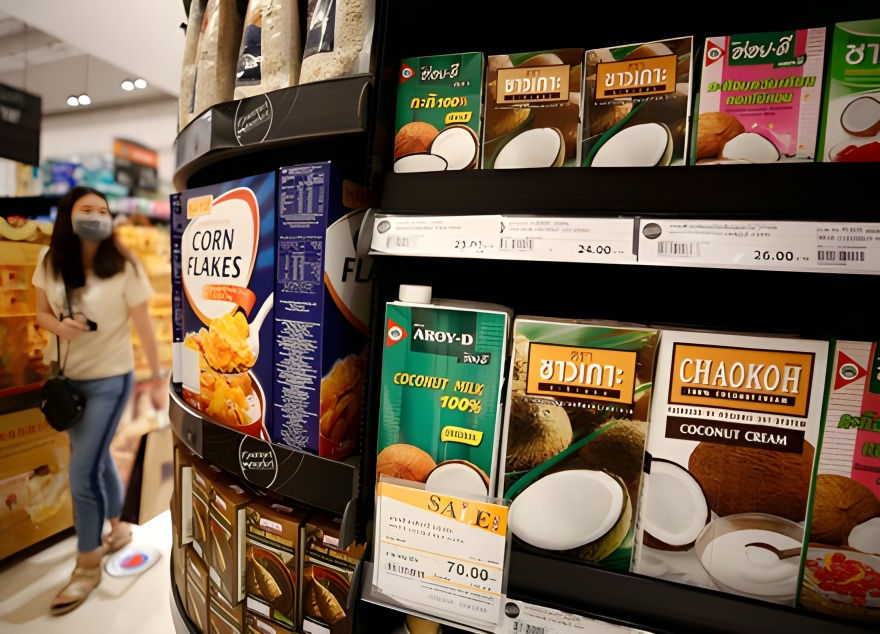Boycott of Thai products in Cambodia: First impact
- Eco News

- Aug 18
- 3 min read
Anger has swelled like a wave across Cambodian social media. The cry has spread like wildfire: #BoycottThaiProducts. But behind this apparent fervour, what are the real economic and social repercussions, a few days after the call to action? The picture is nuanced, far from the certainties expressed online.

A Storm in a Teacup for the Economy?
The official figures, analysed by the CCPS, highlight a crucial reality. Thailand is certainly an important supplier (accounting for around 12% of Cambodia's total imports), but it is far from being vital in most sectors.
The Thai products targeted (beverages, cosmetics, dairy products, snacks) represent only a fraction of these imports. Cambodia imports large quantities of more strategic goods from Thailand that are difficult to replace in the short term, such as fuel, raw materials for industry (particularly textiles), car parts and agricultural chemicals. These sectors are not subject to the boycott.
The first victims: small Cambodian traders
The real pain is felt in local grocery stores and neighbourhood supermarkets. ‘I have entire shelves of Thai products that are no longer selling,’ laments Srey Mom, manager of a grocery store in Phnom Penh, in the Khmer Times. ‘I paid for them, now they're gathering dust. It's my money that's tied up.’ Images of Thai products isolated or sold off at bargain prices are circulating on Facebook groups for shopkeepers, illustrating the immediate waste. The Cambodian Distributors Association has expressed behind-the-scenes concerns about operating losses and wasted stock.
Boomerang effect?
Economic experts are highlighting the risk of a backlash. Thailand is also a major export market for Cambodia, particularly for agricultural products (corn, cassava, fruit) and textiles. An escalation or a targeted Thai response could hurt these key sectors of the Cambodian economy and the workers who depend on them. The Chamber of Commerce is cautiously calling for calm and dialogue.
Patriotism, performativity and divisions
Social media
The boycott is centred on the digital world. Posts are multiplying: videos of consumers throwing Thai products in the bin, lists of brands to avoid, virulent calls for economic resistance.

This intense activity creates an impression of massive movement. However, as noted by a media observer quoted by VOD English, it is often ‘click activism’ or a performative demonstration, concentrated in an urban and connected fringe of the population. The real impact on deep-rooted consumer habits remains difficult to quantify on a large scale.
A temporary national glue... and its limits
In the immediate term, the boycott serves as a catalyst for shared nationalist sentiment. It provides an outlet for frustration over the border dispute and allows Cambodians to reaffirm their identity in the face of a neighbour that is often perceived as dominant. Media outlets close to the government are amplifying this patriotic fervour. However, this unity is fragile. It is likely to fade quickly once emotions have subsided, without any concrete resolution of the underlying dispute.
The socio-economic divide
The movement reveals a divide. The urban elite and middle class, who consume more imported luxury goods and Thai brands, are the most visible participants in the boycott. However, for a large part of the rural or less affluent population, local alternatives to commonly used Thai products (certain processed foods, low-end household products) are either non-existent or too expensive. Their ability and willingness to participate in the boycott over the long term are much more limited, creating a dissonance between online rhetoric and the reality on the ground.
A clash with uncertain consequences
At this stage, the tangible economic consequences of the boycott of Thai products in Cambodia appear to be more of a localised and painful episode for retailers than a decisive economic weapon against Thailand.
The real cost is social and symbolic: it lies in the losses of small local businesses, in the sometimes futile performativity of social media, and in the divisions that this patriotic movement reveals rather than bridges.
The call for a boycott serves as a powerful emotional outlet, a temporary national glue in the crucible of historical resentment. But its real effectiveness in inflicting significant damage on the Thai economy seems illusory. Its sustainability is uncertain, dependent on the persistence of online anger in the face of the harsh logic of daily needs and the interconnected economic realities of the two kingdoms.
The Preah Vihear dispute remains, however, much deeper and more complex than a supermarket shelf emptied to the applause of social media. The Cambodian economy, meanwhile, is holding its breath, hoping that this storm does not turn into a trade conflict with much more serious consequences.







Do you want to play geometry dash lite? It’s a fast-paced game where you control a cube and try to jump over spikes and obstacles. You get to see how far you can get without making a mistake. Just so you know, it’s pretty time-consuming, and there’s occasional lag, but it’s still fun if you’re into challenging games.